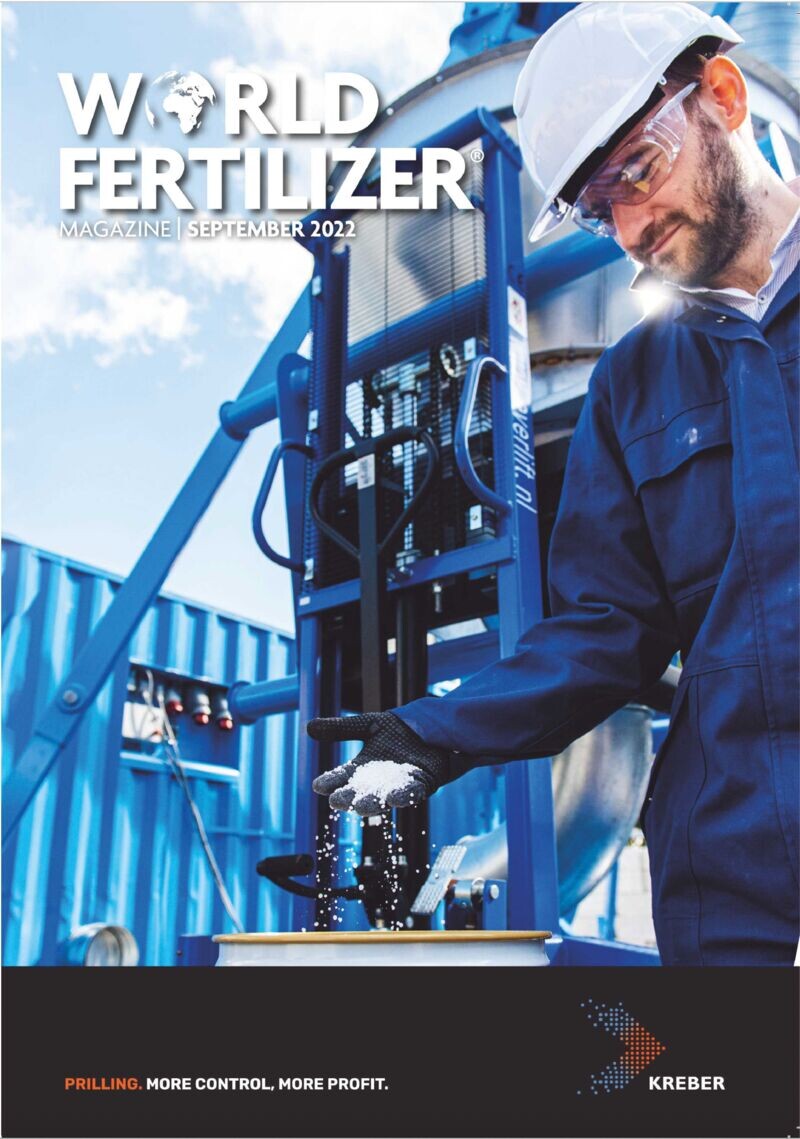Publication: World Fertilizer
Date: September 2022
Expert: Christina Knoecki, NA Manager of Coating Technologies
Date: September 2022
Expert: Christina Knoecki, NA Manager of Coating Technologies
Cool, Calm and Coated
Christina M. Konecki, Arkema, USA, describes how coating agents can be employed to maintain integrity and mitigate biosolids dust across the fertilizer supply chain.
Due to global population growth, there is increasingly more biological sewage sludge to manage. Biosolids are generated by drying out treated sewage sludge and converting it into pellets. They can potentially be used as absorbent materials, and as a source of phosphorous, fuel and fertilizer. The US produces an estimated 7 million t of biosolids per year.1 In 2019, 51% of biosolids were used as fertilizer or soil conditioners, 16% were incinerated, 22% ended up as landfill and 11% were subject to other management practices.2 Reusing, recycling, and recovering waste products creates opportunities to add value as opposed to incurring disposal costs.
In a world where resources are scarce and sustainability is a priority, biosolids fertilizers make use of waste resources that would otherwise be disposed of. They not only contribute to reductions in greenhouse gases, but also help return organic matter and nutrients to soil as part of the circular economy. Biosolids also align with the 4Rs of nutrient stewardship by providing environmentally-friendly plant nutrition.
Treated sewage sludge solids consist of about 50% organic matter, which can improve soil water retention and movement.4 As a fertilizer, biosolids are unique because they are a sustainable nutrient source that can decrease reliance on mineral fertilizers and reduce the cost of sewage sludge disposal. Biosolids are a good source of micronutrients such as copper (Cu) and zinc (Zn), as well as the macronutrients nitrogen (N), phosphorus (P), and potassium (K), however, nutrient values are lower than traditional fertilizers, where the typical range of N is 2 – 8%, P is 1.5 – 3%, and K is 0.1 – 0.6%.5
Due to the low nutrient ranges of biosolids, some producers enhance them during granulation with mineral fertilizers or other wastes, resulting in organo-mineral fertilizers.4 Several studies have shown that there are no significant differences in crop yield when using organo-mineral fertilizers vs. mineral fertilizers.4,6 The organic content of organo-mineral fertilizers improves organic matter and nitrogen content in the soil, and promotes the decomposition of substances.4
To read the full article, please download the PDF.

